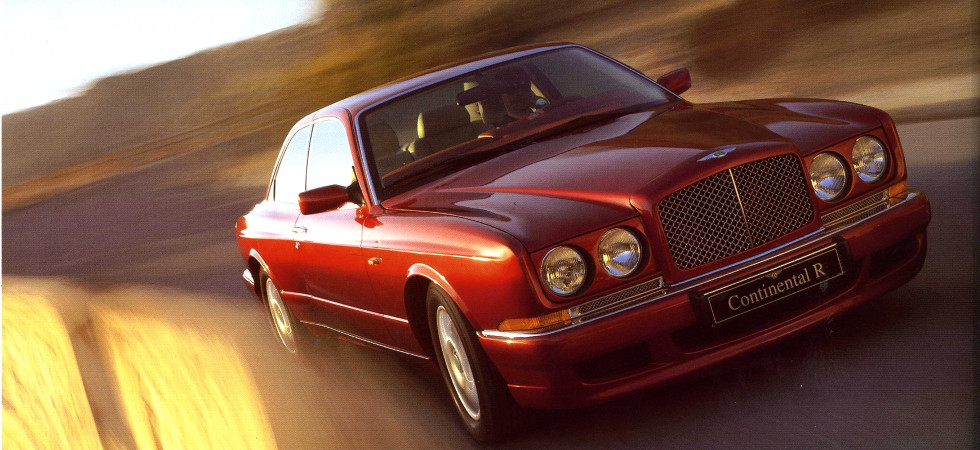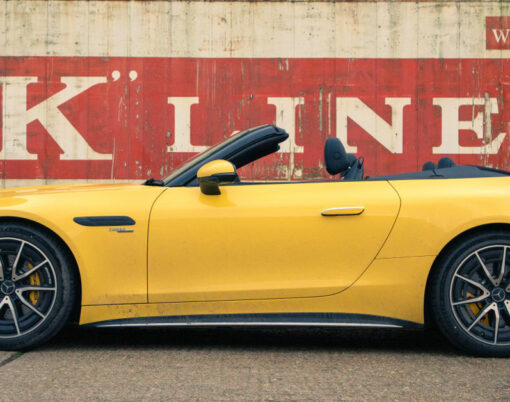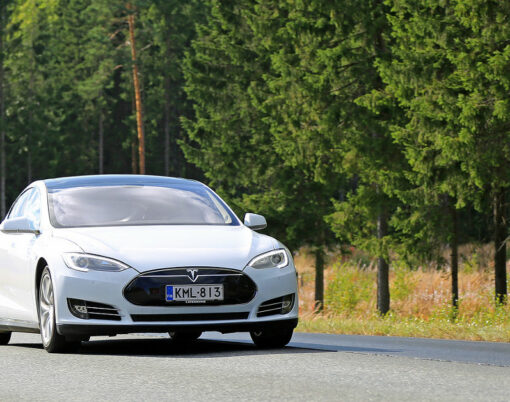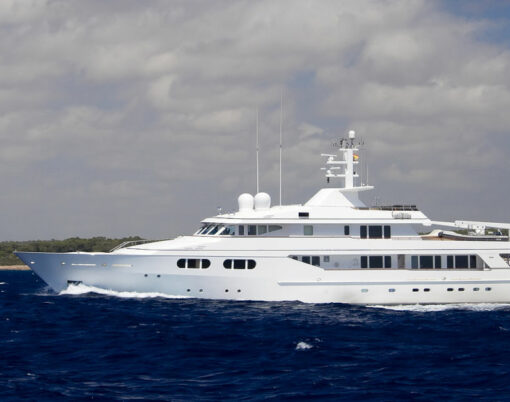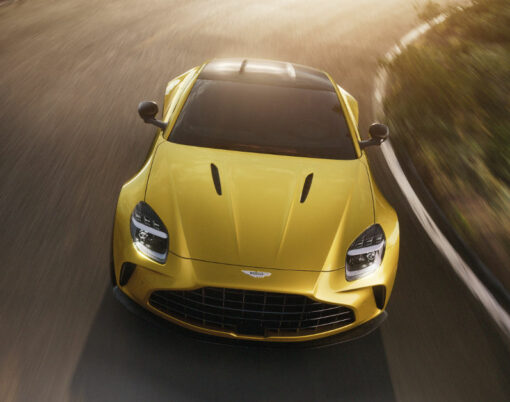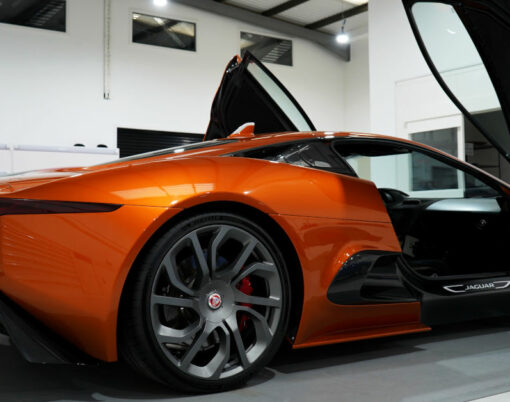Words by Michael Atkinson
‘Mr Bentley . . . He builds fast trucks’. The words of Ettore Bugatti, the Italian born automobile designer, manufacturer and founder of the car marque that would bear his name from 1909. Bentley and Bugatti were racing rivals. For five straight years from 1925 through to 1929, Bugattis won the Targa Florio, an open road endurance race, held annually in the mountains of Sicily. In 1929, a Bugatti also won the first ever Monaco Grand Prix. In 1937 and 1939, Bugatti’s won the 24 Hours of Le Mans. Bugatti prided itself on building the fastest, most luxurious and technologically advanced cars of the day. But to describe the cars his rival Walter Owen Bentley, better known as W.O. Bentley, had designed as ‘fast trucks’, was not only an unchivalrous comment, but one that deliberately missed the beauty, craftsmanship and power that were hallmarks of Bentley cars, combined with their durability and endurance.
In 1919, W. O. Bentley, founded what has gone on to become one of the global by-words for performance and luxury and 2019 celebrates the marque’s centenary. 100 years later, Bentley continues to craft its iconic motor cars in Crewe in England and produce some of the world’s most sought-after vehicles, albeit under very different ownership, now part of Volkswagon AG since 1998.
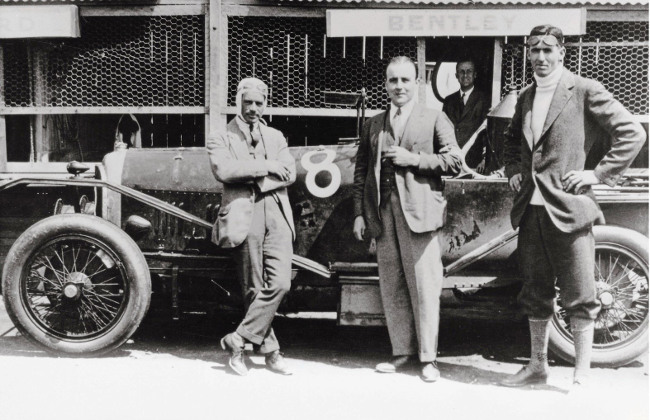
Shortly after the first ever Bentley left its factory, the marque would go on to dominate the 24 Hours of Le Mans, winning five times in the 1920s and then returning to victory again over seventy years later in 2003. Bentley’s racing history and performance, together with some of its famous early racing drivers, would go on to carve out the image of Bentley, an exquisite blend of elegance, opulence, speed and exhilaration.
W.O. Bentley’s ambition was ‘to build a fast car, good car, the best in its class’. It would be a successful journey.
W.O. Bentley was born in 1888, the youngest of nine children. At the age of sixteen, W.O. commenced an apprenticeship in Doncaster at the locomotive works of the Great Northern Railway. It was during his time working for the railways that the early foundations of what would become the Bentley marque began. Along with two of his brothers, he acquired a Quadrant Motorcycle, and began motor cycle racing, achieving success, qualifying for a gold medal in the London to Edinburgh 1907 Trial, an event established in 1904 by the British Motor Cycling Club. It is reported that he could often be found practicing racing on the empty roads in the early hours of the morning, challenging himself before the police speed traps were operating.
His enthusiasm for racing continued and he gained experience in refining engine performance to push the results of his motorcycles further. In 1912, he moved into the motor car industry and went into business with one of his brothers, importing cars made by Doriot, Flandrin & Parant, a French car manufacturer, established in 1906.
Implementing improvements to the cars, W.O started entering some of the vehicles into sports events and he observed how success in such races improved the popularity and desire of the cars, driving commercial results for the business.
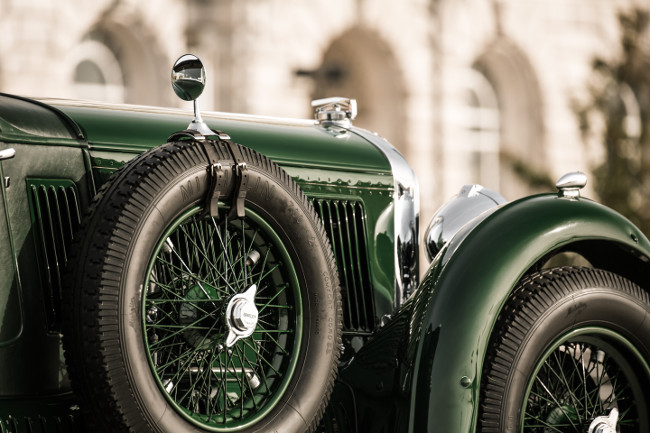
Always looking for ways to deliver improved speed and performance, W.O. realised that the use of cast iron and steel parts made the cars very slow. He is alleged to have picked up a paperweight made of aluminium at the offices of Doriot, Flandrin and Parant and considered if this could be used instead of steel or cast iron for pistons. The new pistons enabled W.O to set a new record for a flying mile, shorting after they went into the vehicles.
This discovery was to prove to be a fundamental one to W.O.’s future success.
When the First World War broke out, W.O. was a captain in the Royal Naval Air Service and used his aluminium pistons to create an engine for fighter aircraft that improved the power and reliability. The Bentley Rotary engine, the BR.1, was introduced into the Sopwith Camel, a fighter aircraft which was vital to Britain’s combat operations.
W.O. was awarded an MBE in the 1919 New Year’s Honours in acknowledgement of the significant impact his invention had made and he also received a sum of £8,000 from the Commission of Awards to Inventors, providing the capital required to finally launch his own car company, which he duly did on the 10th July 1919.
The influential motoring title of the time, Autocar magazine, reported W.O. as working on a vehicle “intended to appeal to those enthusiastic motorists who desire a car which, practically speaking, is a true racing car with touring accessories”. This summation of W.O.’s intent is as relevant for the company today as it was back at the company’s formation.
An early commercial marketer, W.O. recognized the importance of success on the race track for brand awareness and brand equity and racing became an important part of the company’s strategy for its cars, with an early victory at Brooklands, the first purpose built race track, in 1921.
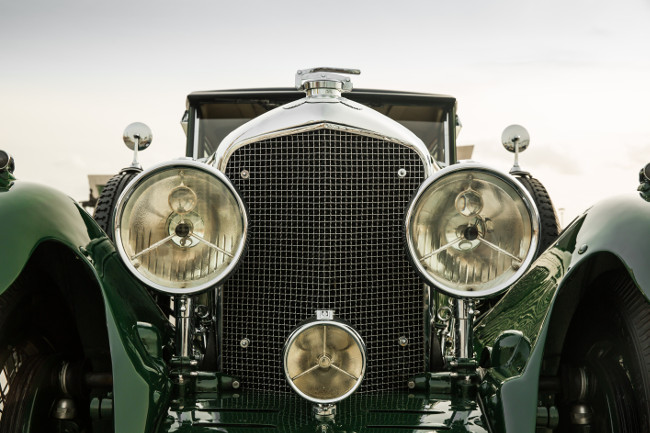
In May 1922, another pre-production 3 litre Bentley finished 13th in the Indianapolis 500 Race, recording an average speed of 74.95mph, a result which startled the Americans. This was a prototype vehicle, competing with intent against much more established racing cars.
A month later, Bentley entered a three-car team for the TT race on the Isle of Man, competing once again against established teams from the likes of Sunbeam and Vauxhall. Bentley was the only one to land finishes for all its cars, gaining a podium second place finish as well as coming in fourth and fifth. The result handed Bentley the team prize and provided the publicity that W.O. sought to establish desire for Bentley cars.
The publicity was perfectly timed as on the 21st September 1922, the first production Bentley left its factory, a 3 litre capable of 90mph, an impressive speed for a standard production car.
Despite the racing focus, Le Mans wasn’t a priority for W.O. in the early years, stating that “cars aren’t designed to stand that sort of strain for twenty-four hours.” Drivers Frank Clement and John Duff finished fourth in Le Mans in 1923, setting the fastest lap in an early Bentley 3 litre. This success prompted W.O. to re-think his approach and Bentley would soon become a name synonymous with Le Mans, with international publicity secured from its five wins in seven years. It was Duff that led Bentley to its first Le Mans victory, taking the crown a year later in 1924. In its 100 year history, Bentley has now secured six first place victories at Le Mans, recording 3 second places and 2 third places. In 1929, it secured a 1-2-3-4 placing. The three consecutive wins by Woolf Barnato, then the chairman of Bentley Motors, are a record which stands to this day.
Development of the cars continued. The 3 litre was followed by a four-cylinder 4 ½ litre, as well as a six-cylinder 6 ½ litre engine, originally launched in 1926 as the ‘Big Six’ and two years later remodeled as a more sporting model known as the ‘Speed Six’. The Big Six came about as a result of the requirement for more horsepower, given performance was compromised when the 3 litre was fitted with heavy saloon bodies, a style which was becoming increasingly popular.
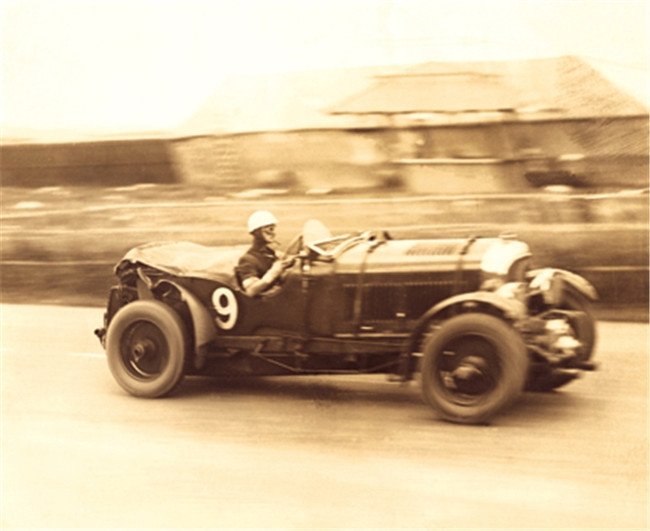
Bentley cars were quickly garnering an enviable reputation, but with sales not quite matching targets and the high development costs of the six-cylinder, the company needed financial backing to enable it to continue operating. That financial backing came from Woolf Barnato, a man who had fallen in love with the Bentley 3 litre and enjoyed racing it at Brooklands. He invested and kept the burgeoning Bentley brand alive. With Barnato’s support, the company could continue to pursue racing acclaim with Bentley continuing to notch up successes at home and abroad.
In 1929, the Speed Six was used in competition for the first time and resulted in Bentley’s most successful ever result at Le Mans, capturing the top 4 spots. At Brooklands in the same year, a 4½ litre driven by Jack Barclay & Frank Clement won the British Racing Drivers Club (BRDC) 500 Mile Race, the inaugural event. 1929 also saw the introduction of the Supercharged 4½ litre by Sir Henry Birkin, which became one of the most famous and collectible of Bentley models.
It wasn’t simply the Bentley cars and their racing wins that drove Bentley’s publicity, it was also the personalities behind the wheels. The stories of the ‘Bentley Boys’, both on and off the track, helped to establish a legendary image for Bentley which would ultimately become an innate and inherent part of its enduring appeal as a car marque.
The Bentley Boys were the ‘playboys’ of their generation, racing hard and fast, applying that mantra to all aspects of their lives and developing an aura that inspired a deep love of Bentley for many. Bentley became more than simply a car marque, it began to epitomize an approach to life and an aspirational lifestyle.
W.O. remarked, “I don’t think many companies can have built up during such a short period a comparable font of legend and myth, story and anecdote. The company’s activities attracted the public’s fancy and added a touch of colour, of vicarious glamour and excitement to drab lives.”
Sir Henry Birkin, a former fighter pilot, was one of the original ‘Bentley Boys’, a group which also included Harley Street specialist J.D. ‘Benjy’ Benjafield, racing journalist SCH ‘Sammy’ Davis, ‘born adventurer’ Glen Kidston and Woolf ‘Babe’ Barnato.
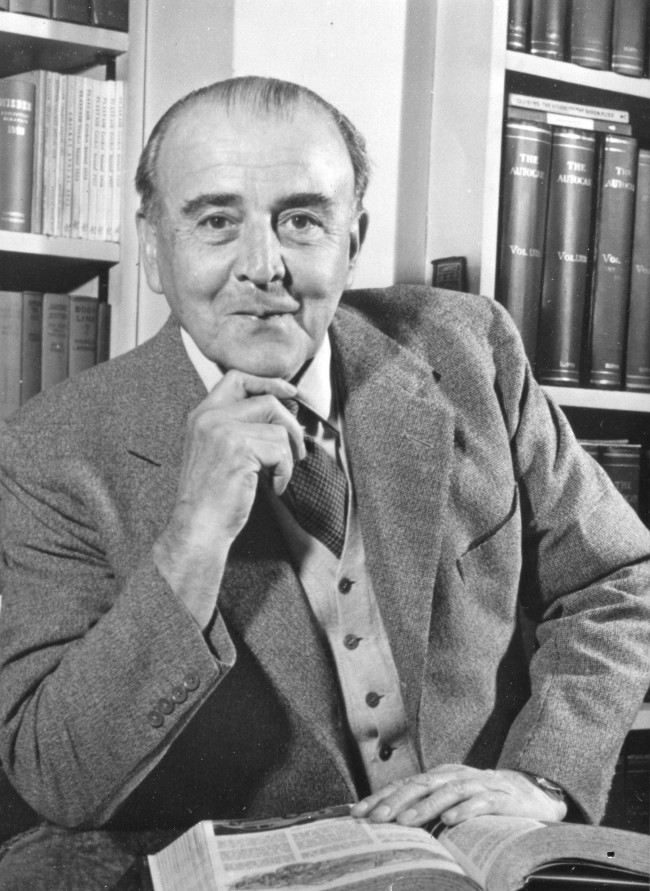
Sir Henry set a new record at Brooklands in 1932 of 137.96mph and along with Sammy Davis, secured Bentley its most celebrated Le Mans win of all in 1927 in ‘Old Number 7’ after the rest of the Bentley team had succumbed in the infamous White House corner crash.
Of the infamous ‘Bentley Boys’, W.O. Bentley once commented, “the public liked to imagine them living in expensive Mayfair flats, drinking champagne in night clubs, playing the horses and the Stock Exchange, and beating furiously around the racing tracks at the weekend. Of several of them, this was not such an inaccurate picture’.
It wasn’t just the ‘Bentley Boys’ that drove the fame of the Bentley brand. ‘Bentley Girls’ played their role too, with Mary Petre Bruce, Dorothy Paget and Diana Barnato, all helping to further build the legend of Bentley.
In 1929 Mary Petre Bruce decided to attempt the coveted Class C 24 hour record at the banked Montlhéry track near Paris. W.O. lent her Sir Henry Birkin’s 4 ½ Litre Bentley. Bruce required cushions to reach the pedals, but covered 2,164 miles in 24 hours at an average speed of almost 90mph to take the record, an achievement that won her life membership of the British Racing Drivers’ Club.
Dorothy Paget, often described as ‘wealthy and eccentric’, took driving lessons from Sir Henry, who described her as ‘capable of handling any make of racing car produced in this country or abroad’. She would go on to sponsor a racing team of supercharged Bentley Blowers.
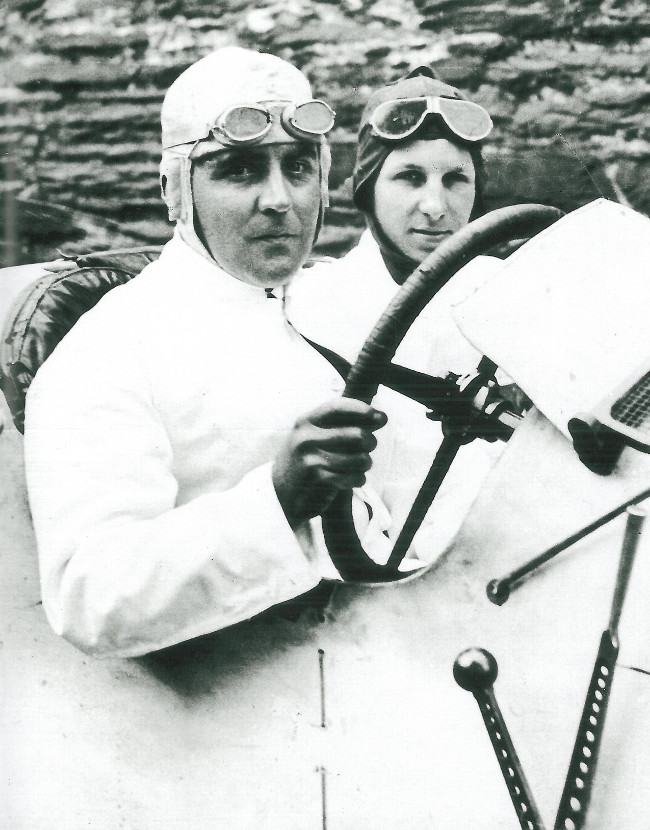
Daughter of Woolf Barnato, Diana Barnato was a keen motorist, driving a silver-grey Bentley 4 ¼ Litre Park Ward saloon given to her by her father on her 21st birthday. She became a top class pilot, joined the Air Transport Auxiliary in 1941, delivering aircraft to front-line squadrons, including 260 Spitfires by the end of the war. In 1963, she flew an English Electric Lightning T14 fighter at 1,262 mph, close to Mach 2.
Bentley enjoyed unrivalled racing success throughout the 1920s, but its fortunes were strained by the 1929 Wall Street Crash. Sales of Bentleys struggled, but the company survived through the continued investment of Barnato.
In 1930, W.O. developed and launched a six-cylinder 8 litre, which would be his final launch for Bentley.
At the time, W.O. commented “I have always wanted to produce a dead silent 100 mph car, and now I think that we have done it.” Captain W. Gordon Aston, reviewing the 8 litre for The Tatler, wrote “Never in my life have I known a vehicle in which such a prodigious performance was linked to such smooth unobtrusive quietness.” Only 100 of these vehicles were ever built.
With the continuing challenges of the global economy, in 1931, the company was put into receivership after Barnato concluded that he could no longer continue to financially support the business.
Rolls-Royce eventually bought the company, the primary motivation believed to be the opportunity to take control of their main competitor, one which had shown performance superiority. Under Rolls-Royce ownership, Bentley would experience mixed fortunes over the subsequent decades. Successes would include a new 3 ½ litre Bentley launched in 1933 and the Bentley Mark V model, launched at the 1939 Motor Show. With the arrival of the war, only 9 examples of the Mark V were ever delivered to private owners, making these a highly prized acquisition today. The Bentley MK VI delivered good sales for the parent company and the launch in 1952 of the 120mph four-seater ‘R’ Type Continental became a highlight for Bentley in the post war period.
In the 1960s, Bentleys began to take on too close a similarity to their Rolls-Royce counterparts, separated only by their badge and this contributed to a decline in sales and the brand’s appeal diminishing.
In 1971, due to heavily challenges within the Aero division, the motor division of Rolls-Royce was separated from the parent company under its own management and became known as Rolls-Royce Motor Cars. The company continued to face financial challenges, but was eventually rescued when it was acquired in 1980 by Vickers. Under this ownership, Bentley began what was considered to be a revival. The Bentley Turbo R was launched in 1985, its power and roadholding capabilities were well received and breathed some fresh air back into the Bentley brand.
Building on the refreshed excitement in the brand in 1991, the company re-launched the ‘Continental’, building a two-door, two-seater which built on the appeal of the Turbo R. A drophead ‘Azure’ followed in 1995.
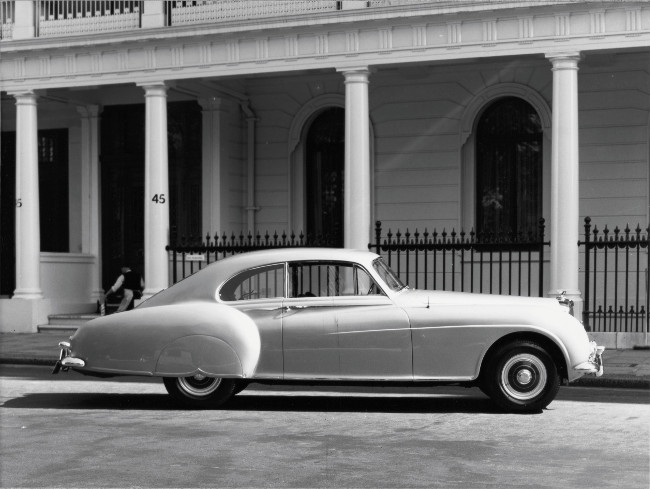
In 1998, Bentley launched the Arnage, powered by a 4½ litre BMW engine. In that year Vickers, put the company up for sale and, after a two-way battle, Volkswagen won, although it lost the Rolls-Royce marque to BMW due to Rolls-Royce plc’s ultimate ownership of the name ‘Rolls-Royce’. Volkswagen acquired control of Bentley, along with Rolls Royce production four years, after which BMW took control of Rolls-Royce.
Under its new ownership, in 2001, Bentley returned to Le Mans with a nod to the significance that success within motor racing had played in the brand’s desirability amongst customers. It secured a 3rd place finish, with a 4th place secured in 2002.
In 2003, the new Continental GT was launched. In the same year, Bentley returned to the top step of the podium at Le Mans. In their third year of return to Le Mans, Bentley succeeded in achieving victory once again, taking 1st and 2nd places. Dindo Capello, Tom Kristensen and Guy Smith won exactly 73 years to the day since Woolf Barnato and Glen Kidston took the top spot in 1930.
To celebrate Bentley’s Centenary, the company has released the Bentley Mulsanne W.O. Edition by Mulliner, a car representing the pinnacle of luxury and performance and inspired by W.O’s final 8-Litre vehicle. It will no doubt, like many other Bentleys of the last 100 years, become a rare classic in the future. Bentleys have become some of the most sought-after motoring acquisitions of all time, claiming multiple spots in the top hundred most expensive classic cars ever sold. In June 2012, a 1929 Bentley 4 ½ litre Supercharged ‘Blower’ Single-Seater, previously belonging to Bentley Boy Sir Henry Birkin, sold at a Bonhams auction for $7,906,745. Not so bad for a ‘fast truck’.












